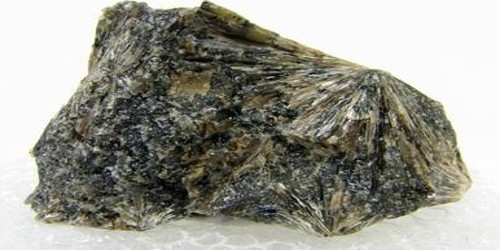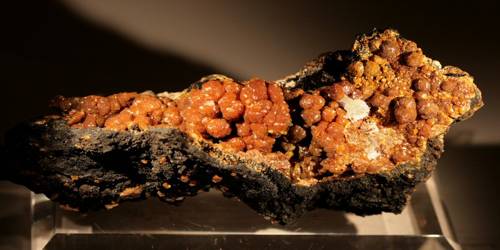Dumortierite is a fibrous variably colored aluminum boro-silicate mineral, Al7BO3(SiO)3O3. It is a fibrous aluminum boro-silicate mineral that occurs in various colors. It is a rare blue or violet mineral occurring typically as needles and fibrous masses in gneiss and schist. It consists of an aluminum and iron borosilicate. It is used in the manufacture of high-grade porcelain.
It was first described in 1881 as an occurrence in Chaponost, in the Rhône-Alps of France and named for the French paleontologist Eugène Dumortier (1803–1873).
General Information
- Category: Nesosilicate
- Formula: Al7BO3(SiO)3O3
- Crystal system: Orthorhombic
- Crystal class: Dipyramidal (mmm)

Properties
Dumortierite crystals are vitreous and vary in color from brown, blue, and green to more rare violet and pink. It has a Mohs hardness of 7 and a specific gravity of 3.3 to 3.4. Crystals show pleochroism from red to blue to violet. Dumortierite quartz is blue colored quartz containing abundant dumortierite inclusions.
- Color: Blue, greenish-blue, violet-blue, pale blue, red
- Crystal habit: As fibrous or columnar crystals; coarsely crystalline to intimate parallel aggregates of needles; massive
- Fracture: Fibrous
- Mohs scale hardness: 7 – 8.5
- Luster: Vitreous to dull
- Streak: White
- Diaphaneity: Transparent to translucent
- Specific gravity: 3.3 – 3.4
Occurrence
It typically occurs in high-temperature aluminum-rich regional metamorphic rocks, those resulting from contact metamorphism and also in boron-rich pegmatites. The most extensive investigation on dumortierite was done on samples from the high-grade metamorphic Gfohl unit in Austria by Fuchs et al. (2005).
Sources of Dumortierite include Austria, Brazil, Canada, France, Italy, Madagascar, Namibia, Nevada, Norway, Peru, Poland, Russia and Sri Lanka.
Information Source:
















